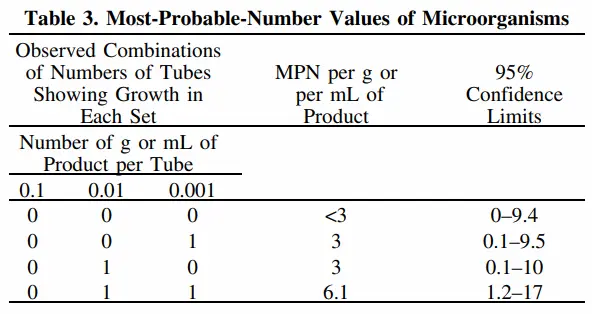When you purchase kratom, it’s important that you know what’s in it. This is why raw materials are often tested in a laboratory setting. Lab tests can tell you a lot about the quality of kratom and whether or not it’s safe to consume. In this article, we will cover the basics of lab testing, what testing methods are used, what contaminants we test for, and how to interpret kratom test results.
Third-party Laboratory Testing
One of the most important things to look for when purchasing kratom is whether or not the product has been tested by an independent, third-party laboratory. In-house testing facilities are often less rigorous and may be biased in their results.
It is also recommended than the facility be certified by a reputable agency or organization to ensure that certain protocols are always followed and processes are standardized. In the United States, one such organization is ISO, or the International Organization for Standardization.
There is a similar entity in Indonesia called the National Standardization Agency of Indonesia (BSN), which is an ISO member. Their standards are referred to as the Indonesian National Standard, or SNI.
We use a combination of both ISO and SNI labs to test our products based on whether the testing takes place before or after importation.
Testing Methods
There are a variety of methods that can be used to test kratom for contaminants and alkaloid identity. The most common methods are high-performance liquid chromatography (HPLC), inductively coupled plasma mass spectrometry (ICP), polymerase chain reaction (PCR), and FDA BAM.
High-Performance Liquid Chromatography
HPLC is a technique that uses a high-pressure pump to force a solvent (usually water or alcohol) through a sample of kratom. The different compounds in the kratom will travel at different speeds, depending on their size and structure.
A detector is used to identify each compound as it comes out of the other end of the column. The data from the detector is then analyzed to determine the identity and concentration of each compound in the sample.
Inductively Coupled Plasma Mass Spectrometry
ICP-MS is a type of atomic emission spectroscopy that uses plasma to ionize atoms. A kratom sample is placed in a chamber and heated until it turns into gas.
The ions are then passed through a magnetic field, which deflects them onto a detector. The data from the detector is then analyzed to determine the identity and concentration of each element in the sample.
Polymerase Chain Reaction
PCR is a method used to amplify DNA samples. A kratom sample is mixed with primers (short pieces of DNA that bind to specific sequences) and enzymes that copy DNA. The mixture is then heated and cooled to create conditions that are ideal for DNA replication.
The result is a sample with a higher concentration of DNA, which can then be analyzed to determine the identity of various components, in this case contaminants like salmonella.
FDA BAM
The FDA BAM method (Bacteriological Analytical Manual) is a microbiological contaminant testing method that uses culture media to grow microorganisms. A kratom sample is inoculated onto agar plates and incubated for 24-48 hours.
After the incubation period, colonies of microorganisms will have formed on the plate. These colonies are then counted and compared to standards to determine the level of contamination indicated by the kratom test results.
What Tests Should Look For
Respectable kratom test results cover both microbiological contaminants and heavy metals that are found the most frequently in these types of products. At a minimum, products should be tested for:
- Salmonella: Bacteria usually associated with fecal matter. Infection usually resolves on its own but can result in diarrhea, abdominal cramps, fever, and, death (uncommon). A 2018 outbreak resulting in 199 infections (0 deaths) was attributed by the FDA to kratom, though the affected products were tied to only a handful of vendors.
- E. coli: Bacteria that lives in the intestines of affected individuals. Infection with some forms of can cause symptoms ranging from diarrhea to pneumonia and even urinary tract infections. One popular testing laboratory has estimated that E. coli is present above acceptable levels in roughly 5% of the samples it receives, which highlights the importance of regular testing.
- Coliforms: A group of bacteria that includes E. coli but also other, less harmful strains. The heavy presence of coliforms in kratom test results is an indicator of poor hygiene during handling and processing.
- Lead: A heavy metal that can be found naturally in kratom leaves but may also be introduced during processing either by contaminated water or outdated machinery. Lead exposure can cause a variety of health problems, including anemia, seizures, cardiomyopathy, and many more. Check out this table from Kratom Science to see a more potential issues.
- Cadmium: A heavy metal that, like lead, can be found naturally in kratom leaves but may also be introduced during processing. Cadmium is toxic to the kidney, lungs, and bones.
- Mercury: Another element that can may be found in concerning levels throughout parts of Indonesia in soil and water as a byproduct of small-scale artisanal gold mining. Mercury is a neurotoxin that can cause tremors, cerebral atrophy, and many other health problems.
- Mitragynine: Since nature’s products can vary so widely, even between leaves on the same tree, we do not test the mitragynine content of every single batch. Instead, we test it at various points throughout the year to get averages and to observe trends.
How To Read Kratom Test Results
While it is important to be able to review your source’s kratom test results, it is equally important that you know what to make of them. There are many different methods of testing and ways to report results, so you’ll want to know what methods were used and what standards to judge them against.
The two most important things usually tested for are microbial contaminants and heavy metals. A good company will go by the guidelines set forth by the American Herbal Products Association (AHPA), SNI, and the FDA BAM, which indicate maximum safe amounts as follows:
Heavy metals:
- Cadmium (Cd): 4.1 mcg/day
- Lead (Pb): 6 mcg/day
- Methyl mercury (Hg): 2.0 mcg/day
Microbials:
- Total coliforms: 104 cfu/g (AHPA) or 10 APM/g (SNI)
- Salmonella: negative in a 25 g sample (all methods)
- E. coli: negative in 10 g sample (less than 3 APM or MPN/g)
Now that you know what you should be looking for in terms of maximum limits, how do you go about units and conversions?
First, remember that there are 1,000 mcg in 1 mg. When we read the maximum limits for heavy metals, we are getting total daily amounts, but SNI labs display the kratom test results as mg per kg of material. We can use this to determine how many grams of kratom you can consume per day to be within the AHPA’s specified safe limits.
Using some real results from one past set of lab results, let’s go through some examples of how these conversions work. Here are the data from the report and how they translate to maximum daily intake limits:
- Lead: Test results were 0.021 mg/kg, which is equivalent to 21 mcg/kg or 0.58 mcg/oz. Since an ounce is 28 g, we then know that there are 0.020 mcg/g of this particular kratom. It would then take 300 grams of this powder to equal the AHPA’s recommended daily limit.
- Cadmium: Test results showed 0.022 mg/kg, which is equivalent to 22 mcg/kg or 0.61 mcg/oz. This is the same as 0.022 mcg per gram, which means it would take 186 grams of this particular kratom powder to hit the prescribed limit.
- Mercury: Results of the test showed 0.004 mg/kg, which is equivalent to 4 mcg/kg, 0.11 mcg/oz, or 0.004 mcg/g. If you consumed 500 grams of this kratom in one day, you would not have reached the above limits.
- E. coli: Results of the test showed <3 APM/g (MPN/g), which is the equivalent of a negative result (not detected in any of the three test tubes). This measurement also follows FDA and USP guidelines for food safety.

- Coliforms: The results of this particular test showed <3 APM/g (MPN/g). Although SNI standards have not established a limit for kratom specifically, we can consult the guidelines for other similar products like vegetables and powders. An average limit for similar products comes to about 10 APM/g.
- Salmonella: Salmonella was negative in 25 g of the sample, which is pretty much universal across most test methods and international standards. Even a small amount is cause for concern, which is why a a larger sample size of 25 g is used.
Notes On Kratom Test Results
Strains that are 100% pure in their given color are homogenized to form the test sample. For instance, a 300 g green sample may consist of 100 g each of Green Maeng Da, Green Dayak, and Super Green. This helps us nail down averages.
All colors are tested after curing and processing but before blending. This is why you see three sets of kratom test results for each batch instead of a separate ones for each of our over 20 strains, many of which are proprietary blends.
It is important to note that blending takes place in accordance with applicable cGMP guidelines and food handling best practices. We also use only NSF-certified surfaces and tools.


Latest from our blog
Please Read….This is Urgent
In loving memory of Ryan, a special individual who recently passed away, we honor his [...]
Damiana Exposed: Special Look At Turnera diffusa (2023)
Damiana Exposed: Special Look At Turnera diffusa (2023) Damiana is a wild shrub native to [...]
Kanna: A New Look At An Exciting Mood Booster (2023)
What is kanna? Some say the botanical has similar effects to MDMA, or ecstasy. Others [...]
Blue Lotus Flower: Unveiling Its Mystical & Therapeutic Powers
To cut to the chase and pickup potent 25x blue lotus extract today while enjoying [...]
Red Bubble Kratom Extraction: A Comprehensive Guide
As a kratom enthusiast, have you ever wondered if there was a method for getting [...]
Aug
Maeng Da Kratom 101: Accurate Info You Can Trust
Maeng Da kratom may be the most popular kratom strain on the market today. The [...]
Aug